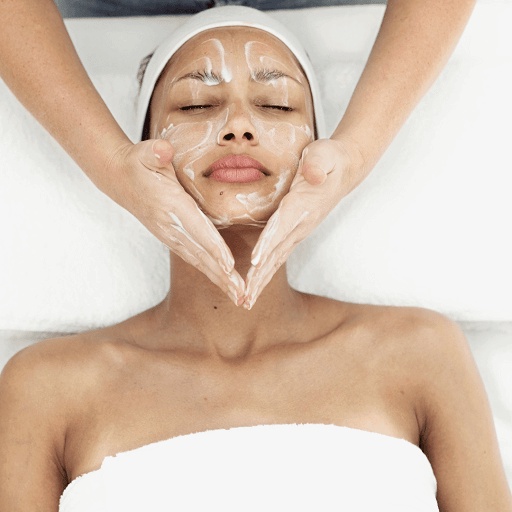As we age, the visible signs of time start to appear on our skin, and wrinkles become a common concern. In the quest for youthful looks, many individuals turn to cosmetic procedures to reduce the appearance of wrinkles. Two popular options for wrinkle reduction are dermal fillers and Botox. Both treatments offer effective solutions, but it's essential to understand their differences and benefits to make an informed decision. In this article, we will explore the characteristics of dermal fillers and Botox, helping you choose the right option for your wrinkle reduction goals.
Understanding Dermal Fillers
Dermal fillers are injectable substances that add volume to targeted areas of the face, effectively filling in wrinkles and lines. These substances can be natural or synthetic, and they are injected into the skin to plump up and smooth out the treated area. Dermal fillers work by replenishing lost volume, stimulating collagen production, and hydrating the skin. They are commonly used to fill in deep wrinkles, such as nasolabial folds and marionette lines, as well as enhancing facial contours and restoring youthful fullness.
The Advantages of Dermal Fillers
One of the significant advantages of dermal fillers is their ability to provide immediate results. As soon as the filler is injected, the treated area becomes noticeably smoother and more voluminous. Additionally, dermal fillers are highly versatile and can be tailored to meet each individual's specific needs. Different types of fillers offer various consistencies and textures, allowing for precise and customizable treatments. Dermal fillers are also long-lasting, with results typically lasting between six months to two years, depending on the type of filler used. Moreover, the side effects of dermal fillers are generally minimal, with only temporary redness, swelling, or bruising being common.
Understanding Botox
Botox, short for botulinum toxin, is a neurotoxic protein that is injected into targeted muscles to temporarily relax them. When injected, Botox blocks the nerve signals that cause muscle contractions, thereby reducing the appearance of wrinkles and fine lines. Botox is primarily used to treat dynamic wrinkles, which are caused by repetitive facial movements such as frowning or squinting. It is most commonly applied to the forehead, glabella (between the eyebrows), and the outer corners of the eyes (crow's feet).
The Advantages of Botox
Botox is known for its ability to provide significant wrinkle reduction, particularly for dynamic wrinkles. Its muscle-relaxing properties allow for a smoother and more relaxed appearance. Botox also offers a quick procedure, with treatments typically taking only a few minutes. The results of Botox injections gradually appear within a few days and can last for three to six months, depending on the individual. The procedure is generally safe, and the side effects are typically mild and temporary, including slight bruising or redness at the injection sites.
Choosing the Right Option
Choosing between dermal fillers and Botox depends on several factors, including the type of wrinkles and the desired results. If you have deep wrinkles or want to restore lost volume in the cheeks or lips, dermal fillers may be the ideal choice. On the other hand, if your wrinkles are mainly caused by facial movements and muscle contractions, Botox can provide excellent results. It's essential to consult with a qualified cosmetic professional who can assess your unique needs and recommend the most suitable treatment plan.
Conclusion
When it comes to wrinkle reduction, dermal fillers and Botox are both valuable options that can help turn back the clock. Dermal fillers excel in restoring volume and
smoothing out deep wrinkles, while Botox is effective in targeting dynamic wrinkles and preventing further lines from forming. Ultimately, the right option for you will depend on your specific concerns and desired outcomes.
It's crucial to have realistic expectations and understand that neither dermal fillers nor Botox can completely reverse the effects of aging. However, they can significantly improve the appearance of wrinkles and give you a more youthful and refreshed look.
Before undergoing any cosmetic procedure, it's important to research and choose a reputable and experienced practitioner. Look for someone who specializes in facial aesthetics and has a track record of successful results. Schedule a consultation to discuss your goals, ask questions, and ensure that you have a thorough understanding of the procedure and potential risks.
During the consultation, your practitioner will evaluate your skin condition, assess the type and severity of your wrinkles, and discuss the benefits and limitations of both dermal fillers and Botox. They will consider factors such as your age, skin type, medical history, and lifestyle to determine the most suitable treatment plan for you.
In some cases, a combination approach may be recommended, where dermal fillers and Botox are used together to address different types of wrinkles and achieve comprehensive results. For example, dermal fillers can be used to add volume to hollow areas, while Botox can be used to relax the muscles that cause crow's feet or forehead lines.
It's important to note that both dermal fillers and Botox are temporary solutions, and their effects will gradually diminish over time. Maintenance treatments will be required to sustain the results. Regular follow-up appointments with your practitioner will allow them to monitor your progress, make any necessary adjustments, and ensure that you are satisfied with the outcome.
In conclusion, choosing between dermal fillers and Botox for wrinkle reduction involves considering factors such as the type of wrinkles, desired outcomes, and individual preferences. Dermal fillers are excellent for restoring volume and smoothing deep wrinkles, while Botox is effective in targeting dynamic wrinkles caused by muscle contractions. Consulting with a skilled professional will help you make an informed decision and create a personalized treatment plan that aligns with your goals. Remember that both options have their merits, and with the right practitioner, you can achieve natural-looking results that enhance your appearance and boost your confidence.


No comments yet